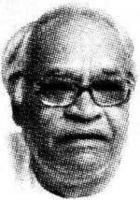Our poor little rich
A republic where everything comes free, or dirt cheap, for the rich — power, water, gas, college education
By Shekhar Gupta
This column appeared in The Indian Express
If you were one among a quarter of a billion Indians living below the poverty line, or one among nearly half of rural Indians who have never had a light bulb in their homes, what would you have thought of the recent pictures of the tony rich of South Delhi holding candle-light marches against a 10 per cent increase in power tariffs? In that entire phase of protest, the one people that were missing were Delhi’s poor. But the well-to-do, even celebrities, were out in strength, painting the media radar screens as if farmers of Kalahandi had besieged the Capital. Yes, they had a genuine cause for complaint on the quality of power supplied to them, of the lack of tangible improvement since distribution had privatised. But a ten per cent increase after so many years?
Having tasted success, the Socialists of South Delhi are now asking for more. Several Resident Welfare Associations (RWAs) are threatening to stop paying their water bills unless the Delhi government junks water reform. Now you could have one view or the other on what kind of reform is needed in Delhi’s water supply, but for the most privileged and prosperous section of Delhi’s elite to refuse to pay their water bills is sheer anarchy and can be put down in 24 hours; just one night spent under a rickety fan in the police lock-up would do. But will the government do it? It perhaps won’t, because of the fear that reform is still seen as “anti-poor”. So the rich might win again, and mind you, it is not just the World Bank-aided water scheme that they are protesting against. Their anger is also caused by another perfectly reasonable idea, of charging a tax on private bore-wells that all of us, or at least most of us, have dug in and around our houses in all of South Delhi, drawing unlimited underground water for free, unmindful of the drying aquifers. We do it because the Jal Board water is so little. Jal Board water is so little because we pay so little for it and because our water distribution has been awaiting reform for decades. But why should we care? We’ve got our free bore-wells for which we use electricity now subsidised to the tune of Rs 182 crore a year by our government. And for drinking water, we get our 20-litre bottles of Bisleri, Aquafina or Kinley home-delivered.
The rich exploiting subsidies in the name of the poor is not really new. That they would hit the streets in protest if these were to be taken away from them, or would refuse to pay their power and water bills, is a new development. The mindset has grown over decades of the pampering of the rich and the middle classes, where the state (or the political system) is persuaded to dole out subsidies in the name of the poor but which benefit only the well-to-do.
On Delhi’s power and water fronts, somebody should check the homes of those protesting: how many of them have their own private (and untaxed) gensets running on diesel (subsidised ostensibly for the poor farmer); how many of them own borewells, and you will know how the most privileged members of our society have successfully fattened themselves by hanging on to the mammaries of the socialist state, while the poor have been marginalised further.
The next example is LPG. If, after almost two decades, the expression “scarcity” has hit our front pages, it is because of the price and market distortion that has gone on in the name of the poor, but to the benefit of the rich. The government wants to subsidise LPG for the man on the street, but would hope to sell it at a much higher price to the dhaba around the street corner. The obvious result is a black market, and now the oil ministry threatens to unleash armies of inspectors to prevent “diversion”. A misplaced subsidy, market distortion, black market, inspector raj and corruption, these are all the most logical links in the same ridiculous chain of misplaced subsidies. Do the leaders of the Left who go apocalyptic at the very suggestion of an LPG price hike, ever wonder whether the poor they speak for can afford a gas connection to begin with? To have LPG, you need a home, a kitchen you can lock, a gas stove, a deposit for the connection. Do the real poor have any of these? And will a small increase really hit the middle, or even lower middle classes so badly? An LPG cylinder today costs less than the price of hiring a (even pirated) DVD, or a Coke and pop-corn at a multiplex. And yet the same people will hit the street over a 10-rupee increase in LPG prices.
Look at it another way. Most lower middle class families today have cable TV connections, and in most parts of India it costs nearly twice as much as an LPG cylinder. Do they ask for subsidies on it? Or do they protest when cable operators announce annual increases, or pass on the service tax burden to them? They are willing to pay for their entertainment. But their essential needs, energy, water, education, and so on, they have been brought up to believe, must be provided by the state free, or at a subsidy.
Talking of education, what happens to your household budget the year one of your children passes out of school and goes into college? Your expenses go down immediately. That is because private schools are still allowed to charge remunerative fees. Our college fees have not been raised for 50 years. Colleges have to live on UGC subsidies at the cost of the tax-payer. This is actually the finest illustration of Indian socialism, where the rich and the middle classes (or bourgeoisie, if you so prefer these days) get the state to allocate subsidies in the name of the poor and then grab them all themselves. The poor obviously do not have the money to send their children to good (private) schools, or to pay for private tutions so their children, unless exceptional, do not get the 90 per cent or so needed to get into a half-decent college. So the school-level subsidy becomes their curse, and the college-level subsidy is out of their reach. What is the answer? To put private schools also under a UGC-type monstrosity, or to let colleges charge realistic fees and use the surpluses to increase their seats as also to subsidise the poor and the deserving, rather than your child or mine?
The other current socialist obsession, Provident Fund interest rates, is a part of the same phenomenon. Eighty five per cent of the EPFO members have deposits below Rs 20,000. So how much benefit can they derive from a nearly 1.5 per cent per year subsidy on interest? At the most, Rs 300 per year, or Rs 25 a month. But the better paid salaried class has been gifted a privilege their counterparts in the most prosperous economies around the world will envy them for: a 9.5 per cent interest, completely tax-free, and with state guarantees. While 85 per cent or more of the genuine working classes only applaud a subsidy paid in their name, the real benefit goes to the haves once again. They are the ones who should be sending thank-you cards to Gurudas Dasgupta.
This is as good a time as any to question this very uniquely Indian version of socialism, which turns Robin Hood on his head by robbing the poor to pay the rich (all in the name of the poor, of course).






